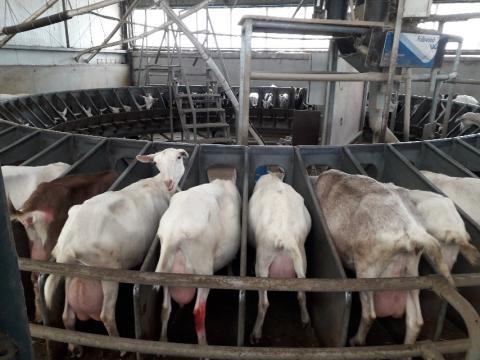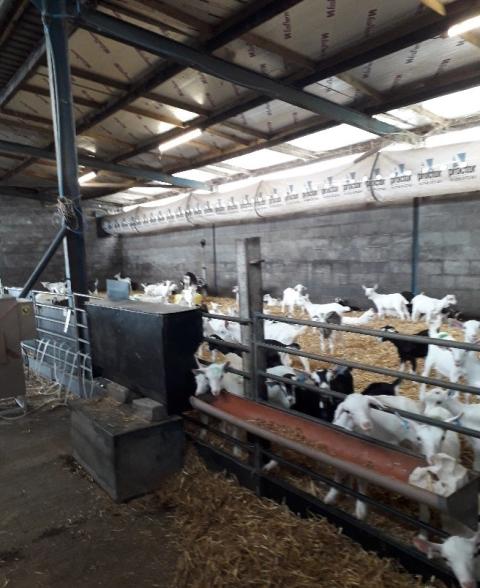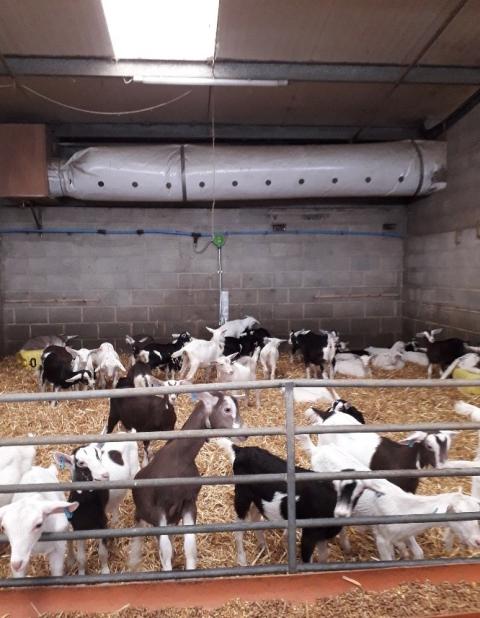Farming Connect Study Visit - Goat Farmers
Funded through the Knowledge Transfer, Innovation and Advisory Service programme under the Welsh Government Rural Communities – Rural Development Programme 2014-2020
Goat Farmers
Yorkshire
8 - 9 June 2022
1 Background
We visited Yorkshire Dairy Goats and St Helen’s Farm on the first day, and attended the Goat Veterinary Society conference on the second day.
1.1 Attendees
Diane Bayliss
Andrew Goodwin
Gary Yeomans
Jess Yeomans
2 Itinerary
2.1 Day 1
We visited St Helen’s Farm and Yorkshire Dairy Goats.
2.2 Day 2
Attended Goat Veterinary Society conference.
|
09:30 – 09:50 |
Arrivals, registration and coffee |
|
09:50 – 10:15 |
AGM & Pres. Welcome / Update on Animal Health Welfare Pathway – Nick Perkins, GVS President |
|
Chairperson |
Morning session: Heidi Svensgaard, Howden |
|
10:15 – 10:45 |
Management Changes to Reduce Parasite Dosing in Meat Goats – Kate Hovers, EIP Wales |
|
10:45 – 11:15 |
Ecological Aspects of Goat Farming – Daydream or Brave New World – Iain Richards, Veterinary Ecologist; Kendal Cumbria |
|
11:15 – 11:45 |
Refreshments, tea and coffee |
|
Chairperson |
Pre-lunch session: Yasmin Cooper, Macclesfield |
|
11:45 – 12:45 |
Developmental Abnormalities in Goats – Is Schmallenburg waiting in the wings? Ana Gomez / Amanda Carson, APHA |
|
12:45 – 13:15 |
“Salmonella Is Not For Kidding Around With” – case study by Alan Murphy, APHA |
|
13:15 – 14:15 |
Lunch |
|
Chairperson |
Afternoon session: Agnes Winter, York |
|
14:15 – 15:15 |
Lameness in Goats – common conditions, causes, control and treatment Discussion based session – please come prepared to share your experiences – Jennifer Duncan, University of Liverpool |
|
15:15 – 16:00 |
Do Goats Eat Anything? Poisoning cases from the field – Lizzie Dunnett, APHA |
|
16:00 |
Meeting summary and close – Nick Perkins, GVS President |
3 Next Steps
We saw the largest dairy goat farm in the UK and learnt about the various new technologies that they are using. We will visit other large goat farms next year to enhance our learning. We also had a large range of speakers at the conference and learnt about reducing the environmental impact of goat farming, while maintaining production and welfare standards.
The things we found most useful were the items relating to dairy goats housed all-year-round. Lameness in goats is a specific problem we encounter that can affect goats, and it is useful to discuss this with others and share experiences, as you always learn something new. Hearing from others and how they foot-trim every 3-4 months using specialists is something we will take away from the afternoon, along with a name to contact.
The real highlight was the farm walk the day before at St Helen’s Farm. We were particularly interested in the kid rearing facilities and the feeding side. I have attached some photos of the farm tour and things which were of particular interest. The ventilation within the kid rearing sheds was exceptional and something that we will be looking into in the next 6-12 months, as pneumonia is a particular problem with kid rearing. Bedding material used was also very different, and possibly something we will take on for future seasons.
Again, the chance to speak with others that are doing the same as us was as useful as the event itself. I shall also be taking away from that afternoon various feeding methods, weaning protocols and their vaccination programme.
Also on the farm was a rotary rationed feeder, which gave each goat a specific amount based on milk yield, weight and age. It was very interesting, but not something that we can invest in at this time, but something to consider for the future.



